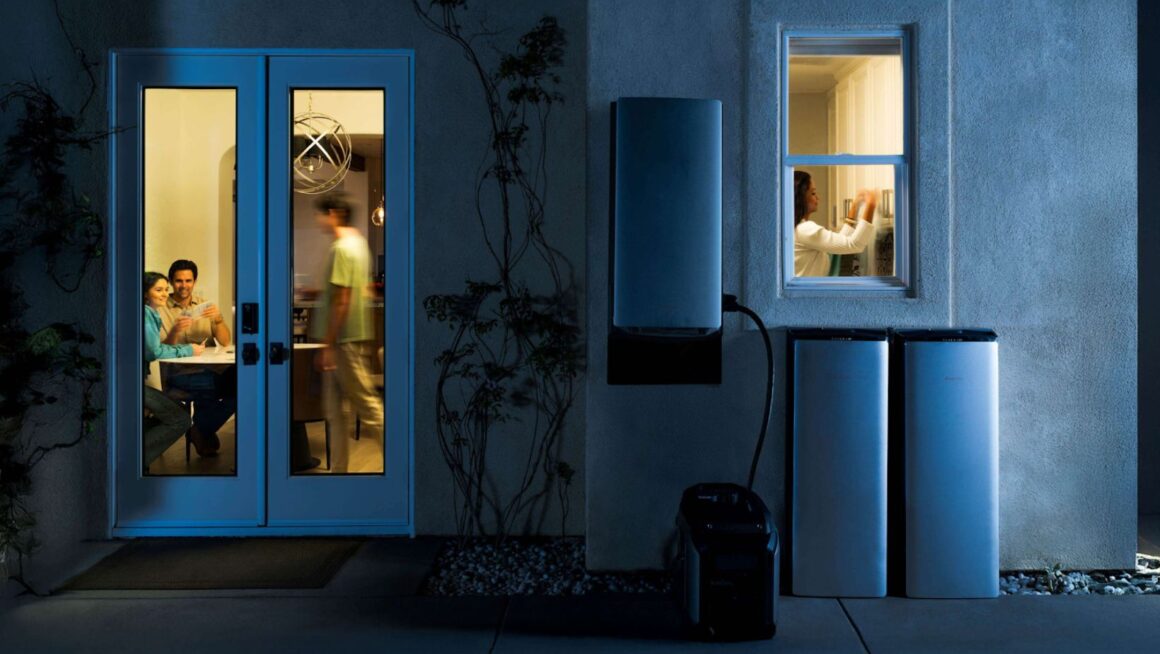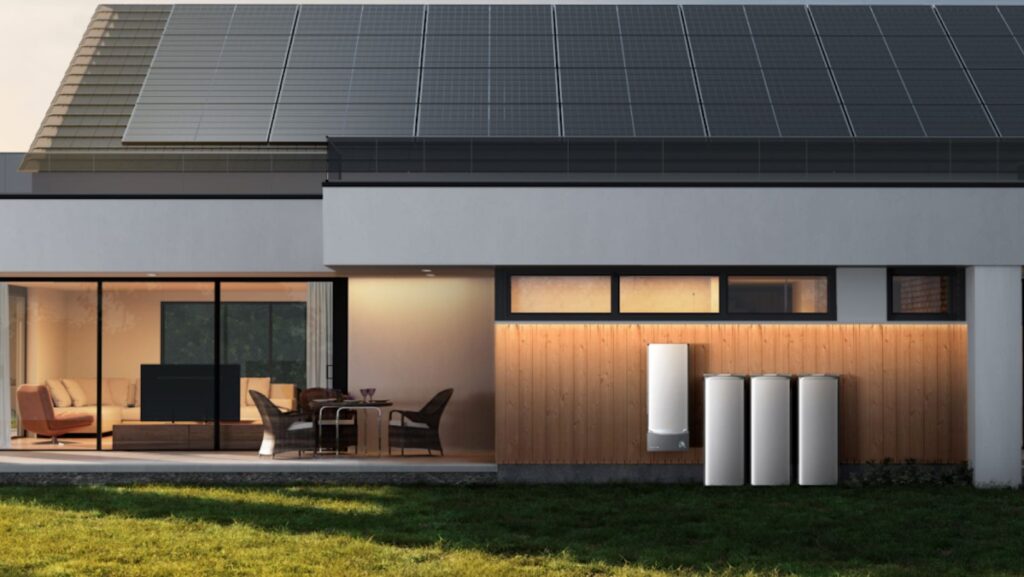When the power goes out, life slows down fast. Lights fade, heating stops, and even small tasks feel impossible.
A home-wide backup power system gives you control again, keeping your home safe and comfortable when the grid fails. Understanding how to choose the right one starts with knowing your needs and how different systems work together.
1. Start with How You Use Power Every Day
Every home has a unique rhythm of electricity use. Before choosing any system, review your daily and seasonal habits. Consider how many people live in your home, what appliances you rely on, and what comfort levels you want to maintain during an outage.
Look at past electricity bills to understand your average daily consumption in kilowatt-hours. Make a note of heavy-load appliances such as ovens, water heaters, air conditioners, or electric vehicles. These determine the size of the system you need.
You can also create a “priority list.” For example:
- Critical needs – lights, refrigerator, medical equipment.
- Comfort – HVAC, Wi-Fi, cooking equipment.
- Convenience – laundry, garage doors, entertainment systems.
This breakdown helps you plan a system that matches your real lifestyle, not just theoretical numbers.
2. Understand the Core Components of Backup Power
A complete home-wide system isn’t a single device. It’s a combination of interconnected components working in sync. The main elements include:
- Energy Source: Fuel or electricity that charges or powers the system.
- Conversion Unit: The inverter or generator that transforms energy into usable household power.
- Storage: Batteries that hold reserve energy.
- Switching Panel: The mechanism that detects outages and automatically redirects power.
- Monitoring System: A control interface or app that lets you track usage and system health.
When comparing options, review each part rather than the system name alone. A high-quality inverter and transfer switch can make more difference to performance than capacity numbers on a brochure.
3. Compare Energy Sources and Their Long-Term Impacts
There are three main energy pathways for whole-home backup: fuel, battery, and hybrid systems that combine both.
Fuel-based systems rely on propane, natural gas, or diesel. They are powerful and can sustain large houses for long periods. The drawback is ongoing fuel cost and maintenance. Fuel generators require safe placement outdoors, regular servicing, and local code compliance for exhaust and storage.
Battery-based systems run quietly and require little maintenance. They can draw power from the grid during low-rate hours or pair with solar panels. However, they have limited capacity compared to large fuel tanks, so they need careful energy management during long blackouts.
Hybrid systems merge both approaches. The battery covers short outages or nighttime loads, and a fuel generator recharges it when needed. This structure maximizes efficiency and extends autonomy.
Choosing the right energy source often depends on your location. In urban areas where noise or emissions are regulated, battery systems are better. In rural areas with frequent long outages, a hybrid or fuel system offers more assurance.
4. Think About Power Management and Smart Controls
Modern backup power systems are no longer simple on-off machines. Many use smart home technology to monitor energy flow, balance loads, and give real-time data on usage.
A smart home panel or management hub can automatically prioritize critical circuits when energy runs low. For instance, it might keep the refrigerator and lighting active while pausing the washing machine until power stabilizes.
Some advanced systems include mobile apps that let you check battery levels, runtime estimates, and even adjust load preferences remotely. Integrating with smart thermostats or sensors further improves efficiency by preventing unnecessary energy draw.
When comparing options, ask whether the system supports remote monitoring, mobile alerts, and smart prioritization. A good management system saves energy and extends battery life during emergencies.
5. Evaluate Scalability and Future Expansion
Energy needs rarely stay the same. Families grow, new devices enter the home, and electric cars are becoming common. A flexible system that allows expansion saves future costs.
Check whether the backup unit you choose can add more battery modules or connect to solar arrays later. Some brands design modular systems that scale from partial to whole-home coverage by adding panels or batteries without replacing the main inverter.
Also consider your future living plans. If you expect to move, a system that can be relocated or resold easily provides more value. Planning ahead avoids having to buy a completely new setup a few years later.
6. Installation and Site Planning
Where your backup power system sits matters as much as how it works. For fuel generators, you need open outdoor space with proper ventilation and distance from windows or air intakes. Check local codes about placement and noise limits.
For battery systems, indoor installation in a garage, basement, or utility room works best. Keep the space dry, within temperature limits, and away from direct sunlight. Make sure technicians can easily access the unit for maintenance.
During installation, an electrician will also assess your main electrical panel, grounding, and transfer switch location. If you plan to add solar panels in the future, pre-installing conduit or connection ports can save time and cost later.
7. Safety Features You Should Never Skip
Backup power deals with high voltage and stored energy, so safety standards matter. Look for systems tested by recognized bodies such as UL, CSA, or ETL. These certifications confirm that the components meet strict design and performance standards.
For battery systems, ensure the chemistry is stable and supported by built-in thermal control and over-current protection. For fuel generators, install carbon monoxide detectors and keep exhaust outlets clear.
If you live in extreme climates, check whether the system includes cold-start capability or temperature-adaptive charging. A small feature like that can make the difference between reliable operation and a failed start when you need it most.
8. Budget for More Than Just the Equipment
When people compare prices, they often focus on the unit cost, but total project cost includes much more: professional installation, wiring, permits, fuel connections, and possibly concrete pads or enclosures.
Get quotes that include all materials and labor. Also ask about maintenance plans and warranty terms. A slightly higher upfront cost with a longer warranty and full service coverage often saves money in the long term.
If you choose a battery system, ask about expected cycle life and replacement costs. Batteries eventually lose capacity, and planning for that avoids surprise expenses later.
Some homeowners qualify for incentives or tax credits when the backup system integrates with solar or renewable energy. Check local or federal programs that encourage energy resilience investments.
9. Plan for Real-World Scenarios
A good system is one that works in everyday life, not only in theory. Imagine several outage scenarios: a two-hour power cut, a full day without electricity, or a week-long grid failure. Test how your planned setup would respond in each.

Would you still have heating and refrigeration? Could you cook and work remotely? How would you recharge devices or refill fuel? Writing out a few practical examples helps ensure you’re not over- or under-estimating what your system must handle.
It’s also smart to practice a short “power-off drill.” Turn off your main breaker for an hour while monitoring how your system responds. This exercise builds familiarity and reveals any weak points before an actual emergency.
10. Maintenance and Long-Term Reliability
A home-wide backup system should last for years, but only with proper care. Fuel generators need routine checks for oil levels, spark plugs, and filters. Battery systems require periodic firmware updates and inspection of connections.
Schedule maintenance twice a year, ideally before and after severe weather seasons. Keep a log of test runs, fuel quality, and performance data. Many smart systems can now send automatic maintenance alerts to your phone.
Reliable after-sales support is another factor to weigh. A responsive service team and readily available spare parts will keep your system dependable long after installation.
11. Environmental and Community Considerations
More homeowners now care about sustainability. A battery-based system or a hybrid that pairs with solar reduces reliance on fossil fuels and cuts emissions.
In neighborhoods with strict noise or emission rules, silent electric backup systems can be a social plus. Some regions even encourage shared microgrid setups where several homes exchange power during outages.Ultimately, investing in a home-wide backup power system or a home battery backup solution is about ensuring long-term energy security, comfort, and independence for your household.


More Stories
Surefire Spots to Purchase Nylon Webbing Straps Online: Tested Retailers & Price Comparo
Property Valuation Certificate in Dubai: When You Need It and How to Get It
The Welcome Bonuses at EU Casinos: A Comparison of Real Offers